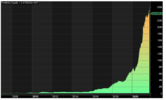- Joined
- 6 January 2016
- Posts
- 254
- Reactions
- 187
Is there any harm in posting back-tests that at least cover the GFC? Doesn't take that much more time or computing power.indeed, I think you should backtest the system on TA of the medieval price of wheat...
We had a long discussion in the past, I believe a backtest more than 4 or 5 y old is rubbish, due to market changes: prorata of qant, exposure to O/S money and electronic trading/super funds weight;
If you think your buy tomorrow will be in any way similar to one in 2008, good luck;
even simple items like inflation;; your lower/higher limit ? do you take cpi into account in your backtest?
It can be done,I am sure but I will not and i somewhat suspect you do not?
let's respectfully agree to disagree.I am sure you can get good results and be happy with 15y backtests; I will not bother anything more than 10y at the very max and testing against 10 or more years of a mega bull market may not be the wisest?
But I know over longer periods (+15 years), almost all of the systems presented here under perform (PLEASE prove me wrong).
Long term trends in equities are long term trends in equities - they haven't changed much since the 1980's (I know, as my system that I've traded day in day out, for over 8 years, still performs similar to backtests from the 1980's).
Anyways, good luck to all the cherry-pickers and connect-the-dot champions of this thread.





